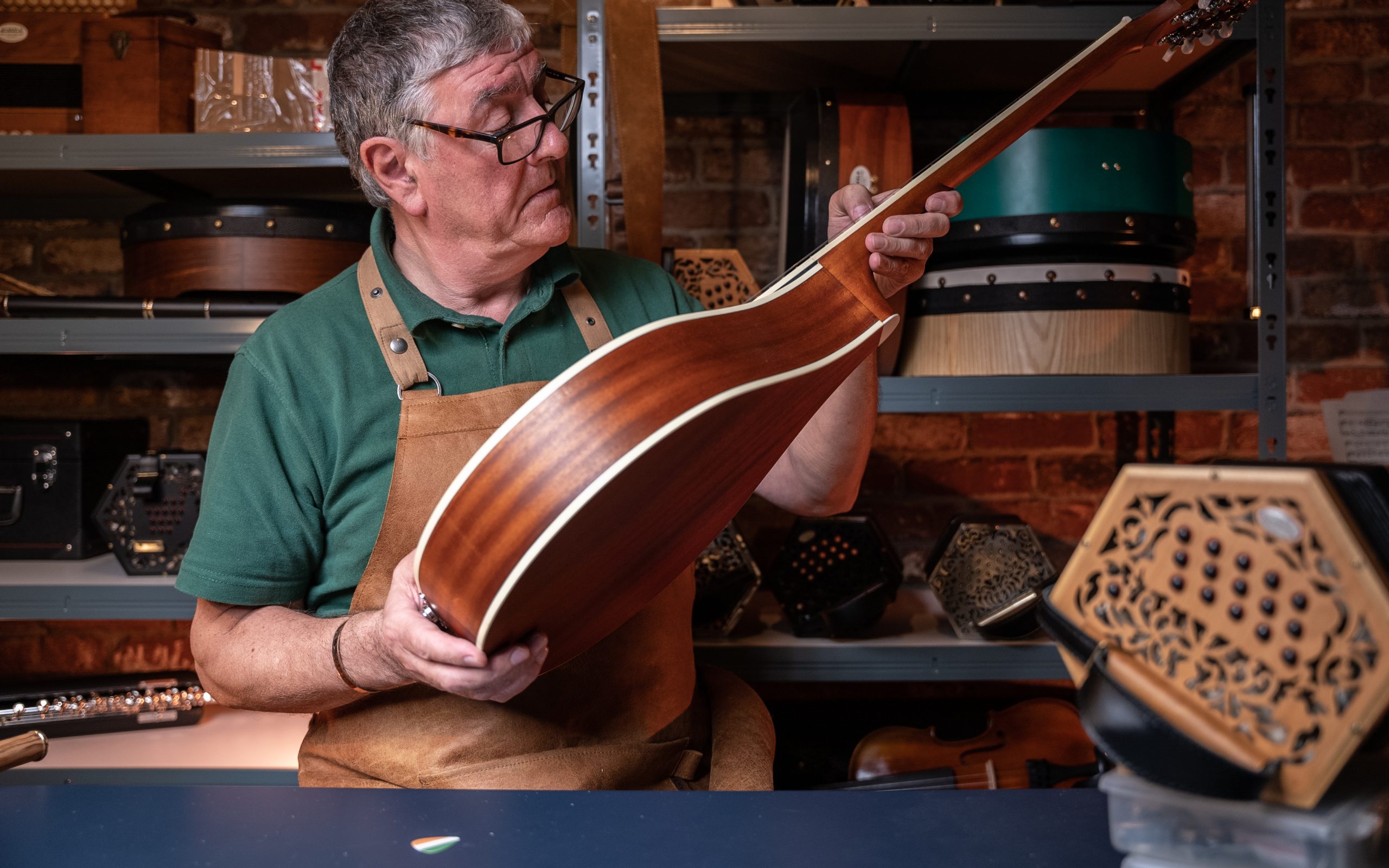It can take a while to familiarise yourself with the tuning process for an Irish bouzouki, especially when you’re just starting out. That’s why I’ve put together this handy guide to help you out.
It takes time to develop the skills and confidence to tune by ear, but don’t worry, there are plenty of tools to help you out in the meantime. Keep reading to learn how to easily identify your bouzouki strings, and how to tune them like a pro. We’ll have you sounding good as new in no time.
Irish Bouzouki Tuning Guide
All you really need to tune your bouzouki is a good quality digital tuner. More specifically, a chromatic tuner.
Any style is fine, but most will clip on to the headstock of your instrument and, easily and accurately, pick up the frequencies.
Before you get started however there are a few things you need to know.
How are Bouzouki Strings Numbered?
The strings are numbered 1 to 8, starting from the string closest to the floor. That means the string closest to your chin is number 8!
Bouzouki strings are tuned in pairs, or courses.
See below for more information.
What is Standard Tuning for an Irish Bouzouki?
How is an Irish bouzouki tuned? The strings can be set up in two ways:
- Unison strings – each pair of strings is tuned to the same note as its partner
- Octave strings – the final string pairings or courses, are tuned to the same note, an octave apart
The choice is yours. Personally I find that octave tuning adds a certain depth to the tone.
What’s the Difference Between Irish Bouzouki and Greek Bouzouki Tuning?
Not only do these two instruments have physical differences (Irish bouzoukis have a flat back, while Greek bouzoukis feature the traditional round back) they are also played using different tuning systems.
Standard tuning for a Greek bouzouki is CFAD with the string pairs tuned to octave intervals.
Bouzouki Tuning for Irish Music
Two tuning systems are commonly used for Irish folk music. Keep reading to learn which one is right for you:
GDAE Tuning
GDAE matches the standard tuning of the Irish fiddle, tenor banjo and mandolin.
It’s a comfortable tuning for those who prefer to play melodies and gives quite a traditional sound.
When using GDAE tuning, the strings should be tuned to the following notes or pitches:
- 1st & 2nd string – E4
- 3rd & 4th strings – A3
- 5th & 6th strings – D3 (or D4/D3 if using octave tuning)
- 7th & 8th strings – G3 (or G3/G2 if using octave tuning)
GDAD Tuning
GDAD is arguably the more popular tuning system. It’s an open tuning, similar to DADGAD which is used by Irish folk guitar players.
Open tuning means that if you strum the instrument without pressing any of the frets, you will still get a chord. In this case, a Gsus2 chord. This gives a modal sound popular among many players of traditional music.
GDAD is a great tuning to use for chordal accompaniment – it’s perfect for accompanying other musical instruments or even singers.
When using GDAD tuning, the strings should be tuned to the following notes or pitches:
- 1st & 2nd string – D4
- 3rd & 4th strings – A3
- 5th & 6th strings – D3 (or D4/D3 if using octave tuning)
- 7th & 8th strings – G3 (or G3/G2 if using octave tuning)
How to Tune Your Bouzouki
- Select your desired tuning system above.
- Using your chromatic tuner to guide you, slowly turn the relevant tuning peg for each string until the tuner indicates that the note is sounding at pitch.
- Remember to tune your strings one at a time. When you’ve tuned one course or pair, try playing together to make sure they sound good together.
Why Does my Bouzouki Keep Going Out of Tune?
New strings can take a while to settle, so if you’ve recently changed the strings on your bouzouki or you’re playing on a brand new instrument, it might take a while before they will hold their tuning correctly.
Unfortunately, until they settle, you’ll just have to continue to retune them.
Another thing to remember is that musical instruments, especially those made of wood, are sensitive to changes in temperature and humidity. Make sure to invest in a quality hard case to store and transport your ‘zouk’.
If you’re looking for a bright, warm balanced tone D’Addario bouzouki strings are a great starting point for musicians at any level of playing.
McNeela Irish Bouzoukis
If you want to take your playing to the next level with a brand new instrument then why not check out the McNeela Online Bouzouki Store where we offer an extensive range of bouzoukis. There’s something for everyone.
To learn more about the Irish bouzouki and how to get the most out of your instrument make sure to check out my Irish Music Blog.



